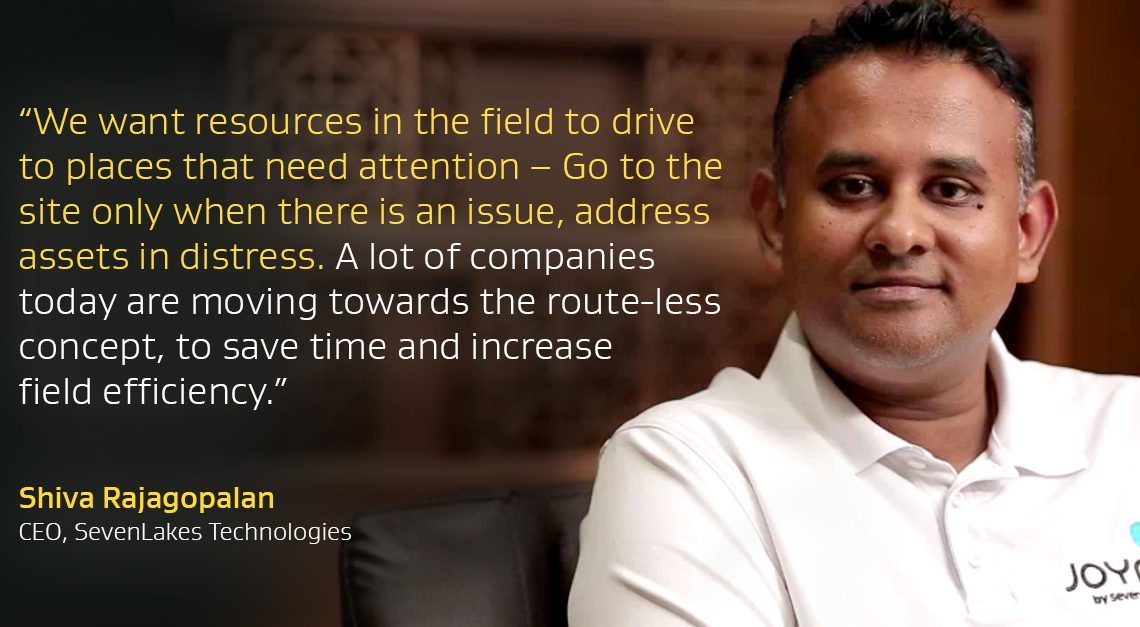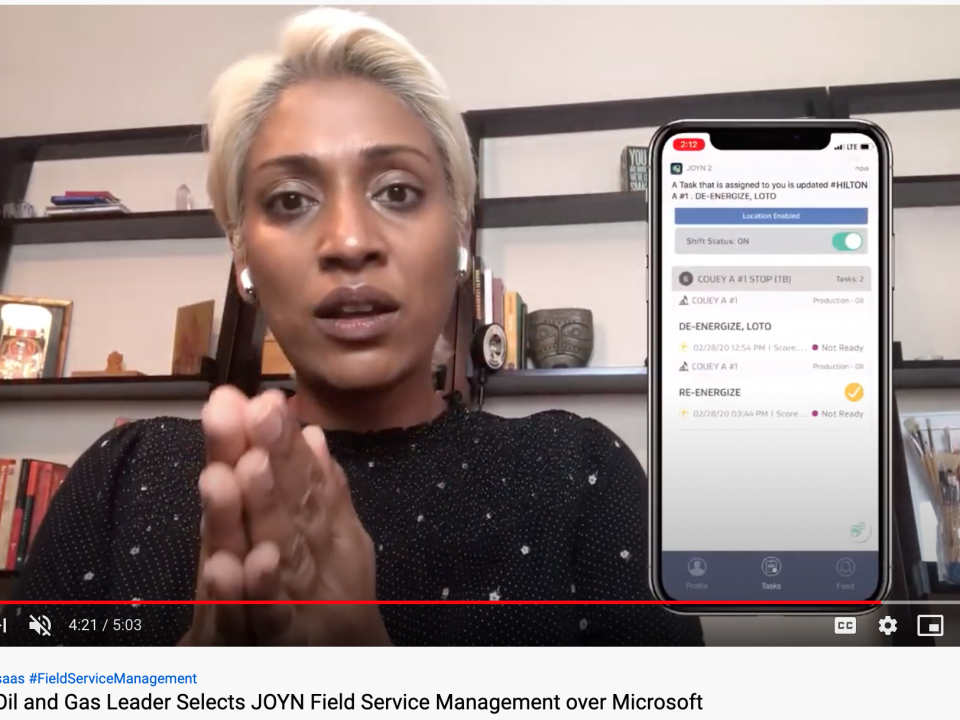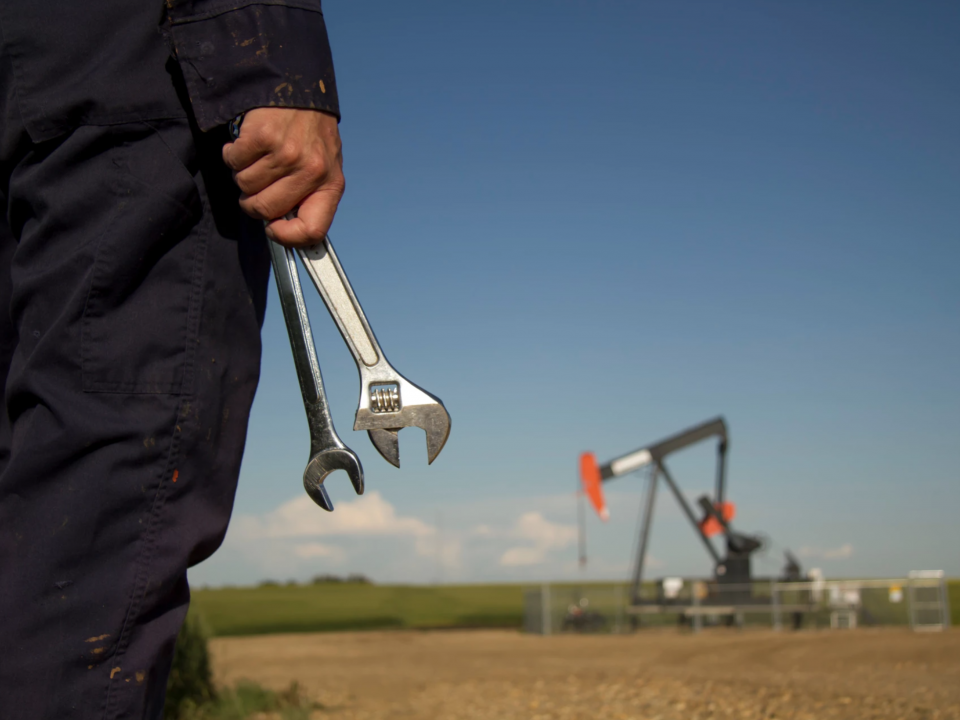SHIVA’S INTERVIEW PART 1: “EMPATHY FOR VOICE OF THE FIELD LEADS THE WAY TO PUMP BY EXCEPTION”
- TECHNOLOGY USED IN OIL AND GAS INDUSTRY
- FIELD DATA
- DIGITAL OILFIELD TECHNOLOGY
- APPOIL AND GAS SOFTWARE
- INGDIGITAL OILFIELD SOLUTIONS
- OIL AND GAS
- DATA CAPTURE AND REPORT
- MOBILE APP FOR OILFIELD
- APPLICATION FOR OIL FIELDSBIG DATA
- JOYN2
- ADVANCED OILFIELD TECHNOLOGY COMPANY
- JOYN FDG
- pump by exception
- CAPTURE OIL AND GAS
- PRODUCTION
- VOICE OF THE FIELD
“Empathy is about standing in someone else’s shoes, feeling with his or her heart, seeing with his or her eyes. Not only is empathy hard to outsource and automate, but it makes the world a better place.” – Daniel H Pink
Technology is meant to empathize and create solutions that solve everyday issues. Empathy for the voice of the field, for the effort and time for every worker in the oilfield. Empathy for executives who must take the prompt decisions based on hard facts and chart expansion plans optimizing resources at hand. It is a tough act, indeed. The oil prices stick to their cyclic nature and companies cannot afford to be deploying more hands to pump more – it is simply not feasible anymore. How do we break this cycle? How do we stay put on the path of growth without adding more resources? How do we drive returns from investments made in automation? These are some of the questions that top oil and gas producers grapple with, every day. I spoke to Shiva Rajagopalan, CEO, Seven Lakes Technologies on these issues and discussed how empathy can lead the way to pump by exception, and ultimately to more oil, here’s an excerpt….
QUESTION: SEVEN LAKES HAS EMPATHY AS THE CORE THEME FOR THE YEAR 2019. WHAT DOES THIS MEANS TO OUR CUSTOMERS?
Shiva: Empathy to me is twofold, one – you’ve got to have empathy with the field workers. Without the voice of the field you don’t have a business, they’ve got to do their work. They’ve got to keep the oil field pumping. So having empathy for them is incredibly important.
And, number two, you got to have empathy for the executives in the corporate office making decisions. Their budgets are declining because of the oil prices. Thus knowing how they want to operate their businesses is also important. JOYN, our product is designed keeping both of these parties in mind.
We are committed to help E&P producers realize the vision of connected oilfields that pump by exception. JOYN FSM, the only pump by exception mobile app, has already started making its impact felt and is leading the way to route-less oilfields. And, it is built on the core philosophy of empathy, living the promise of 40% time back to every worker in the oilfield.
QUESTION: WHAT DO YOU THINK IS GOING TO BE THE FOCUS FOR ALL OIL AND GAS INDUSTRY IN 2019?
Shiva: I see companies responding to voice of the field and picking up right technologies to do so.
Let me explain. The oil and gas market is off to a little bit of a rough start with the price of crude going down. There is a lot of pressure now on the oil fields to work more efficiently and produce as much as possible, what that means is do more with less and therefore, pumping by exception becomes incredibly important.
The oil fields are actually going to take advantage of the significant amount of automation, made over the last couple of years now. A layer of artificial intelligence (AI) on top of the IOT data will play a major part to ensure assets in distress get priority attention. AI can make it possible by matching the most suited resource to most critical tasks, automatically. This in turn leads to efficient fields that pump by exception.
When the field efficiency is in the focus, voice of the field is very important. For me the voice of field actually means a couple of things; one, it is literally the voice of the wells and equipment. And, then you have the oil field workers in the field that are closest to these assets. They both cumulatively make up the voice of the field.
Back in the day when oil prices were very high, you could pump in a lot of capital money and drill more wells to get higher production number. Now you don’t have access to that kind of capital dollars. Thus it becomes incredibly important to keep the existing assets pumping in great shape. And for that, you’ve got to listen to the assets that you have in the field – not just the equipment but also the workers.
QUESTION: OIL AND GAS SECTOR IS RESOURCE SENSITIVE, BUT IT IS YET TO WAKE UP TO THE VOICE OF THE FIELD. WHAT COULD BE THE REASON FOR IT?
Shiva: Well, it again goes back to when the price of oil was $100 a barrel you had access to a lot of capital and therefore you could just drill more wells. The voice of the field was less important because the decisions were made from the corporate level – and you could pump in dollars and therefore you would produce more by drilling. Thus, the drilling side or the exploration stage saw a lot of injection of great technology like the Shale technology. The production side never really saw that uptick, until the last few years when the price of oil depreciated significantly. In recent years SCADA devices, IOT, automation has been seeing a lot of improvement. You are able to monitor assets with more automation. This means more data and which requires the companies to build ability to crunch that data and make decisions to actually pump by exception. Thus, slowly but surely the voice of the field is being heard and slowly but surely more technology is being adopted on the production side, as well.
QUESTION: WHAT COULD BE THE COST OF IGNORING THE VOICE OF THE FIELD?
Shiva: If the oil and gas industry doesn’t listen to the voices of field, they won’t be able to maximize cash flow. In order to improve revenue they must produce more and, for producing more they need to adopt new production technology. Oil and gas producers are not drilling as they used to. They are now keen to reduce the cost of doing business in the field, and that means pumping by exception. The idea is not to waste time and effort of the resources by sending them to assets that do not need an inspection. Rather use resources more wisely, right where you need them most. So, the voice of the field is actually being slowly heard.
Is it more aggressively being adopted? Not so much. That is because the price of oil has been playing an up and down game, a sort of hide and seek! Hence, the rigs started coming back up online in places like Permian, but now it’s back down.
Eventually the prices will stabilize and it’ll be a number that people can work with, and therefore they will make adjustments. The voice of the field actually is being heard. The adoption of new production technology is happening. It’s slow, but it’s happening.
QUESTION: WHAT YOU ARE SAYING IS, USE OF TECHNOLOGY CAN HELP OIL AND GAS SECTOR BE PRICE-PROOF?
Shiva: Yes, the way that the sector can actually become a bit more price proof is by adopting technology, when they are not relying on a lot of resources. The most amount of money spent in an oil field is for manpower and therefore if the sector is actually able to optimize that by adopting new technologies such as AI then they are able to give themselves a cushion when the price of oil goes down. And therefore they are becoming a bit more price proof than how they are currently.
Every minute counts in the oil field, every minute. A maintenance technician, for example, gets some tickets, they get to know of some issues in the field reported by other operators, and they go address them throughout the day. So if they are actually addressing only issues then they are maximizing time. However, if they are just going and seeing all these assets throughout the day- to see if they need maintenance, they are literally driving around miles and miles and miles and not really making the best use of time.
It is our core philosophy – we want resources in the field to drive to places that need attention not just for the sake of driving to the asset – go to the site only when there is an issue.
A lot of the companies today are moving towards the route-less concept, especially on the field technician side. These field technicians could be maintenance technicians – Fluid Level Techs, Measurement Techs, Plunger lift Techs, Artificial Lift Techs and so on. Each of these workers have specific tasks assigned to them by their foreman and, they’re just going to those assets that needs a task to be performed. They’re literally running route less today. Every day is a new route for them.
However, for persona such as lease operators that is still not prominent. They’re used to running a static route and that is a piece that we are actually trying to change using JOYN. Even they could be running route-less. It may take some time before it becomes more and more prominent. But definitely the technology is now available for them to be able to do that.
QUESTION: ANOTHER ISSUE THAT OIL AND SECTOR IS STRUGGLING WITH IS RESOURCE CRUNCH. HOW DOES JOYN ADDRESS THIS?
Shiva: It’s a question a lot of our customers have been asking us – how to develop a platform that will allow them to seamlessly plug-and-play resources. And that goes back to route-less concept. If you’re truly running route-less, you’re not going to be able to know every single assets profile by heart – there’s just no way, oilfields are so spread out. You’ve got many assets and therefore you won’t know everything. Thus having an asset profile, having a history of asset, be it system generated events or manually generated events; keeping track of all of that in a chronological order within a platform, allows you to transfer that knowledge seamlessly from one resource to another resource. That is exactly what JOYN is doing – creating that asset profile for the oil field. Therefore, if a resource is retiring or needs to be replaced, you can seamlessly plug in another resource to take on that role.
**
In the second part of the interview, Shiva talks about how JOYN aligns with the requirements of the oilfield and sets the internal IT teams free from necessary evil ‘of attempting custom software development’.
To know more on how JOYN FSM is connecting oilfields and equipping every field worker to pump by Exception visit – https://www.sevenlakes.online/solutions/Joyn-2 Thanks for reading. You might want to check out for JOYN FSM platform by clicking here.
If you have any questions regarding how we are supporting the biggest names in the Oil & Gas industry pump by exception, feel free to drop us a note here.






